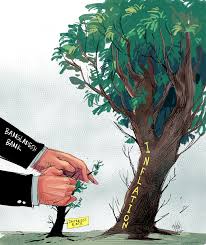
Last week, the Bank of Ghana laid any lingering doubts over whether expansionary supply side economics or demand management driven economics was going to guide the President John Dramani Mahama administration during the early stages of its tenure in office. By increasing the benchmark Monetary Policy Rate by 100 basis points to 28%, it is now clear that the restoration of macro-economic stability is the immediate target, with the promised expansionary policy stance to follow after this has been achieved.
The interest rate hike follows on from the new government’s unusual – but prudent – decision to cut public expenditure this year in a bid to bring the fiscal deficit down to 4.1% of Gross Domestic Product, from the well above target 7.9% outcome in 2024. But the rate hike has surprised many who thought that the central bank would follow the lead of government itself which has used financial discipline to achieve rapid fiscal consolidation which in turn has forced treasury bill rates down to the lowest levels since 2022.
The MPR increase last week will expectedly bring about slight increases in interest rates charged by financial intermediation companies to borrowers, although it should be noted that the sharp drop in treasury bill rates since the new government assumed office had not been accompanied by a similar drop in rates charged by commercial lenders, since inflation has stubbornly stuck at just over 23%. Rather the drop in treasury bills has simply been the result of government’s successful strategy of cutting back on its short term treasury issuances and its rejection of the relatively high bids that have been made for them, in order to cut its interest costs.
The underlying problem behind still high commercial rates then remains relatively high inflation and this is what the BoG, as an inflation targeting central bank, has set its sights on.
To be sure its monetary policy stance is on solid ground. Monetary tightening tends to curb inflation but at the cost of the economic growth rate. But Ghana’s growth rate is sturdier than expected, at 5.7% in 2024, exceeding both the target of 4.0% and 2023’s performance of 3.6%. Furthermore there are early signs that it will remain strong this year. The BoG’s real sector indicators point to a sustained improvement in economic activity, amid significantly improved business and consumer sentiments.
Besides, government has conservatively targeted a 4% growth rate for 2025 in anticipation of the economic costs of fiscal consolidation and a tightened monetary stance to bring inflation down drastically, in order to set the foundation for sustainable expansionary economic policy.
The first stage of the Mahama administration’s game plan is to restore economic stability, epitomized by low inflation and fiscal deficit, and exchange rate stability. The Bank of Ghana has obviously read the script.
